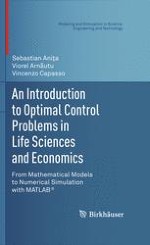Combining two important and growing areas of applied mathematics—control theory and modeling—this textbook introduces and builds on methods for simulating and tackling concrete problems in a variety of applied sciences.
Emphasizing "learning by doing," the authors focus on examples and applications to real-world problems. An elementary presentation of advanced concepts, proofs to introduce new concepts, and carefully presented MATLAB® programs guide the reader through methods in optimal control and related models. This approach not only fosters an understanding of the basic topics, but also leads the way to new, independent research.
With minimal prerequisites and exercises in each chapter, An Introduction to Optimal Control Problems in Life Sciences and Economics, serves as an excellent textbook for graduate and advanced undergraduate courses in mathematics, physics, engineering, computer science, as well as biology, biotechnology, economics, and finance. The work is also a useful reference for researchers and practitioners working with optimal control theory in the above areas.
